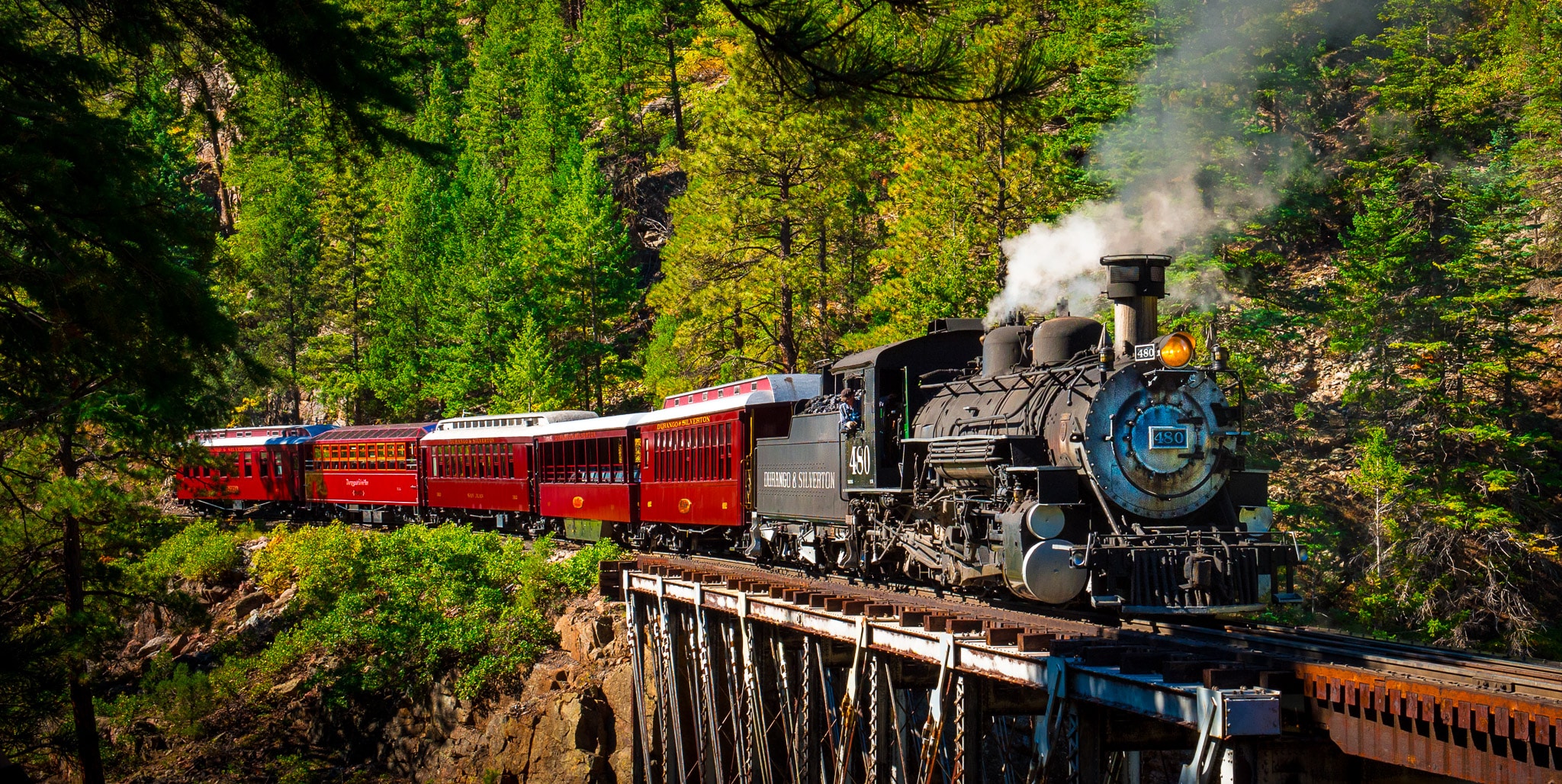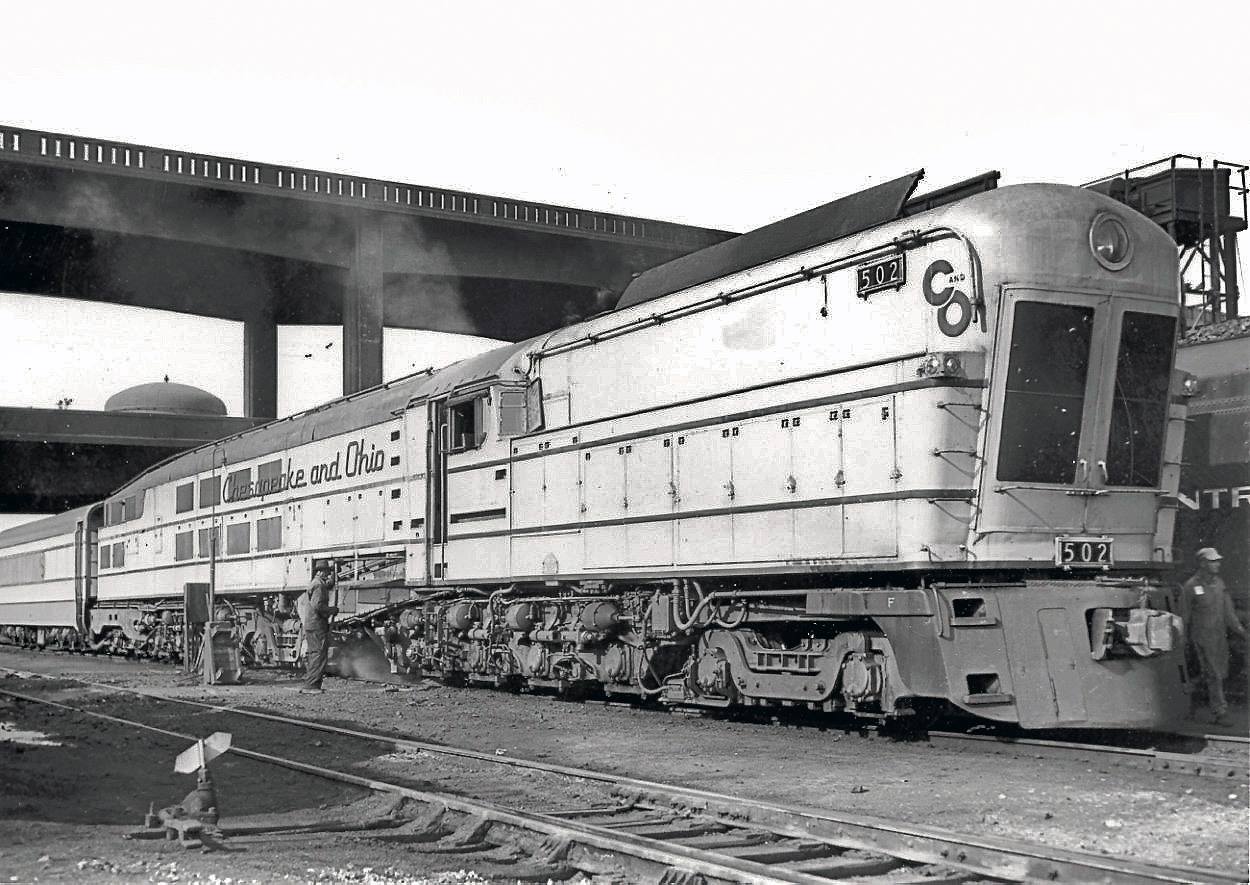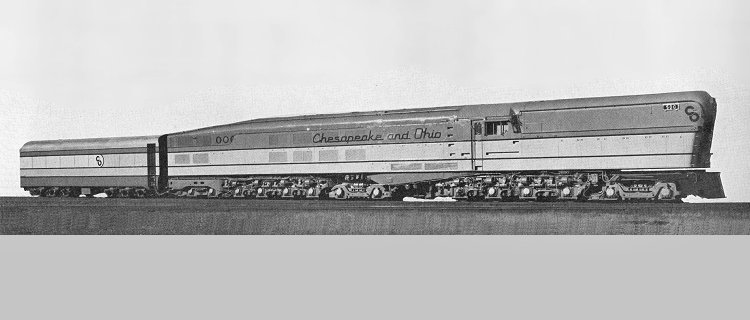The D&S stuff is really funny-looking. The boilers look way too large and are slung so low on them






I'm a pretty low key rail fan, the sort that drops a windows and gets excited when the crossing arms go down to block the road so I can here the train rumble by.
I've been lucky enough to ride the White Pass & Yukon Route over the pass and into British Columbia being pulled by their steam Engine No. 73, a 2-8-2 Mikado type Baldwin Locomotive built in 1947 (I had to steal that from their web page) in one of the carriages original to the railway from 1899. This was a few years ago now so you're getting some high quality iPhone 4 pics (google is your friend to get some much better pictures and video).
Steam powered rotary snow plow
https://www.youtube.com/watch?v=QBSuNz3g0oA to see it in action pushed by Engine 73 (and a few Diesels).
Lastly, we were back up in the Yukon this past September and got to see the one of their trains pull into Carcross which is the furthest they run up the line. The line goes on and ends in Whitehorse and it is all still there, it just needs to be opened up and rehabilitated, the docks there and the sternwheelers are long gone though from the Yukon River.

Adam
Ohh, I wanna play!
A favorite of mine, GP30!

Needs no introduction. A great exercise in excess.

PRR S1. Awesome, but not so hot for the real world.

My favorite engine: E8

In reply to Shadeux :
I do like the burly, furrowed-brow look of the GP30. They look like such a brute. I think the Chessie Systems GP30S were the best-looking livery. Those and the SD45 (big, powerful, fast, and ooooh those flared radiators) are about the last EMD locos I like.

I think if I had to pick favorites
Steam:
Pennsylvania K4s 4-6-2 Pacifics. Preferably the post-war variants with the steel pilot/drop coupler. Fast and not too frilly.

PRR J1 2-10-4 Texas: Dubbed "War Babies" theser weren't even a PRR design, but with PRR touches, man, are these a mean-looking engine. They are here to work and nothing else. Also, I love how PRR post-war steam came in two variants: dirty and filthy. Sadly, the Pennsylvania wouldn't save any of them for preservation, because they weren't a Pennsy design but a C&O T-1

And finally, oh, those Pere Marquette N-1 2-8-4 Berkshires. What a beaut. A do-it-all engine, and quintessential American looks.

Diesel:
Alco PA. The belle of the ball. Look at those lines. And in SP "Daylight" colors. Sure the 244 prime mover was trouble-prone, but with looks like those, who cares?

Alco RS3: It's kind of the Deuce Roadster of the train world. Simple, clean, functional, but attractive in its functionality. And they were workers, with higher tractive effort than their competitors. Railroads loved them and ran them until they fell to pieces.

Alco C636: The swan song of Alco, and the engine that in theory should have turned things around. It beat EMD's SD45 to the 3600hp punch, but railroads weren't quite ready for the big power, 6-axle market. Big, powerful, much more reliable with the new 251 engines. But earlier troubles had eroded too much of their market share and hurt their reputation, and GE was now competing against them and not selling them the best electrical components and the engines developed a reputation for beating up tracks and roadbeds. An engine that was simultaneously too soon and too late.


As I understand it, one of the few single-track passenger lines still in operation. Metro-North Harlem Line, northern portion (between Southeast and Wassaic). New Haven Line legacy livery.
Yeah so for those of us who aren't fluent in locomotive what do the X-X-X numbers I see here every second post represent?
I know I could search it but it would be good info to have in here. And I want the grm explanation.
In reply to 1SlowVW :
It's referring to the number of wheels under the engine, NickD I'm sure will go into more detail.
In reply to 1SlowVW :
Both, the first number is the number of wheels ahead of the driven wheels, next the driven wheels and the last the trailing wheels (but they are all under the locomotive). Just waiting on NickD to give us the full rundown with proper terminology.
In reply to 1SlowVW :
The first number is the number of wheels on the lead truck. The lead truck is undriven and pivots and guides the engine through curves. Typically a 2 or a 4 if they have one. Freight engines typically have 2, while passenger engines usually have 4 to help with higher speeds. A zero is typically a switch engine, which operate at lower speeds and don't need it, and concentrated more weight on the drive wheels.
Second number is driven wheels. This is usually between 4 and 10. There are less and more but its rare. The more drive wheels the longer the engine gets and the harder to negotiate turns. A common trick on 10 driver engines was to have flangeless wheels to allow them to swing over the track and not bind. Also, driving wheel diameter determined operation style. A tall driver lacks low-end starting power but does higher speeds. Shorter drivers are slower but have lots of reactive effort.
The third number is trailing wheels. Again, undriven, and usually between 2 and 4. These support the cab and firebox. A larger trailing truck allows a bigger firebox, typically resulting in more power. Also typically ride better and track better in reverse. A lot of earlier locomotives are lacking them, because they were less powerful.
There are also four digits, which are articulated engines. Like a 2-6-6-2. These have two separate sets of driven engines hooked together. It was a way of getting around that "too long" trouble. Rather than 12 or 16 rigid drivers, you split them into into 2 sets of 6 or 8 and hung it in the middle.
Common configurations:
4-4-0 is an American (dual purpose)
4-4-2 is an Atlantic (passenger)
2-6-0 is a Mogul (freight)
2-6-2 is a Prairie (dual-purpose)
4-6-0 is a Ten Wheeler (dual purpose)
4-6-2 is a Pacific (passenger)
4-6-4 is a Hudson (passenger)
2-8-0 is a Consolidation (freight)
2-8-2 is a Mikado (freight)
2-8-4 is a Berkshire (dual purpose)
4-8-2 is a Mountain (dual purpose)
4-8-4 is a Northern (dual purpose)
2-10-0 is a Decapod (freight)
2-10-2 is a Santa Re (freight)
2-10-4 is a Texas (freight)
4-12-2 is an Overland (freight)
2-6-6-2 and 2-8-8-2 are common but unnamed (freight)
4-6-6-4 is a Challenger (freight)
2-8-8-4 is a Yellowstone (freight)
4-8-8-4 is a Big Boy (freight)
Any 0-x-0 is just a switcher. 4, 6 and 8 were most common.
There were also some railroads that called a class a different name, typically a North/South thing. Like C&O calling their 2-8-4s a Kanawha instead of a Berkshire and their Northerns were a Greenbriar, or Western Maryland calling their 4-8-4s a Potomac instead of a Northern. New York Central was billed as the "Water Level Route" and boasted their flat track, so they called a Mountain a Mohawk instead, as well as calling a Northern a Niagara and coming up with the Hudson class name. Another weird one was during WWII there was a push to rename the 2-8-2 from a Mikado to a MacArthur, due to anti-Japanese sentiment, but it never stuck and people just called them Mikes instead
I worked on engine testing for the Tier4 V12 that goes in present day GE / Wabtec locomotives. I not a big locomotive enthusiast but it was an interesting platform to learn about. For example all current locomotives run water with a lubricant additive and fire up the engines to keep coolant temps above freezing in cold weather. If it gets too cold they dump the water to prevent freezing the block and radiators. They run water to prevent an environmental issues from leaks, spills, or these cold weather events. The shape of modern railroad equipment is largely dictated by 100 year old tunnels that would need opened up to pass a shape any larger. When running in series with multiple locos and passing through a tunnel the second engine gets very little fresh air due to the exhaust of the first loco. This un-intended EGR causes a severe power derate on engines further back in the chain, nearly 50%.

Nitroracer said:When running in series with multiple locos and passing through a tunnel the second engine gets very little fresh air due to the exhaust of the first loco. This un-intended EGR causes a severe power derate on engines further back in the chain, nearly 50%.
That's wild.
Suprised no one has mentioned this freak" The C&O M-1. The last gasp of steam.
The design of the M-1 was a collaboration between the C&O, the Baldwin Locomotive Works and Westinghouse. The C&O possessed substantial coal-hauling revenue and was loath to abandon it as a fuel source. Further, C&O's engineering staff expressed concern that oil reserves would be exhausted within 25-30 years. The locomotive contained a single Westinghouse turbine which in turn drove four direct current (DC) generators, mounted in pairs.Each generator produced 1,000 kilowatts (1,300 hp), and the four generators collectively turned eight traction motors.
Defying the usual convention, the M-1 was arranged with its boiler in the rear and the coal bunker in the front. The turbine-generator system meant that the M-1 contained no cylinders. The reduced number of moving parts meant that, in theory, the M1 required far less maintenance than a conventional steam locomotive. Its designers predicted that it could make the run from Washington to Cincinnati—and back—without servicing.[
The locomotive's throttle included eleven settings, ranging from one (idling) to eleven (full speed). The locomotive's cruising speed was 70 miles per hour (110 km/h), at which point the throttle was on "seven." During a trial run with a reporter from Popular Mechanics aboard, a C&O engineer expressed his dissatisfaction with a local speed limit of 75 miles per hour (121 km/h), noting that he would "sure like to be able to pull it back to eleven!" Not including research and development, the three locomotives cost US$1.6 million. (Lifted from Wikipedia)

The C&O cancelled the Chessie in 1948, before it ran in revenue service, depriving the M-1s of their reason for existence. The M-1s themselves proved expensive to operate and mechanically unreliable.They spent their short careers operating between Clifton Forge and Charlottesville, Virginia.The locomotives were scrapped in 1950.

In reply to Appleseed :
I remember reading where a lot of the cars from the Chessie ended up somewhere in South America, Argentina I think.
Norfolk & Western also tried the whole coal turbine thing with the Jawn Henry. They couldn't get it to work either.

PRR also experimented with it with their S2, although theirs was a little more conventional looking. They also could never get it to work. Inefficient at low speeds, slow to accelerate and prone to breakage, they gave up on it.


The Norfolk & Western's legendary home-brewed big three. The J-class 4-8-4 on the left, the massive Y-class 2-8-8-2 in the center, and the A-class 2-6-6-4 on the right.
Having only recently heard N&W 611's whistle, it's not what I expected. Much deeper and lower toned. Seems like the N&W loved those style whistles though.
The whistle on their A-class is particularly haunting.
We held a Gathering of the Flock of Galloping Geese at the Ridgway railroad Museum in October. For a nice action video intro to what these things are search youtube for Ridgway Railroad Museum Introduction and click on the video labeled train intro 1080p. (Don Paulson). We had geese 4, 5 and 6 along with our recreations of Goose 1 and a 1913 Model T track inspection car.
The Last Train To Nowhere





Nicknamed "The Last Train To Nowhere", the remains of three steam locomotives and some cars sit just outside of Nome Alaska. During the gold rush, investors from Chicago decided to build a railroad connecting numerous mining camps, with plans to extend further to Vancouver. They snapped up 3 old 1880s-era 0-4-4T engines from the New York Elevated rail system and shipped them to Seattle, and began the Council City & Solomon River Railroad in 1903. But the project ran out of money, and the gold rush came to an end, and only 35 miles of rail were completed before construction stopped in 1906. Everything was abandoned where it sat and these days the remains of the CC&SRRR are a tourist attraction. From some angles, its hard to see there even was a railroad there, making it look like 3 steam locomotives just fell from the sky in the middle of a field. Eerie stuff.
Check out the steam engine running in a Chinese coal mine. Awesome spark show at night. I remember reading a National Geographic in the 80's where they showed how China was still building steam engines because coal was so plentiful it was nearly free.
https://www.youtube.com/watch?v=pYqb1x21hWg

You'll need to log in to post.